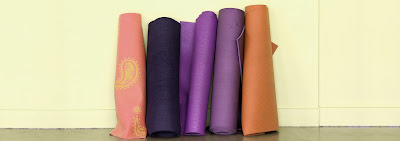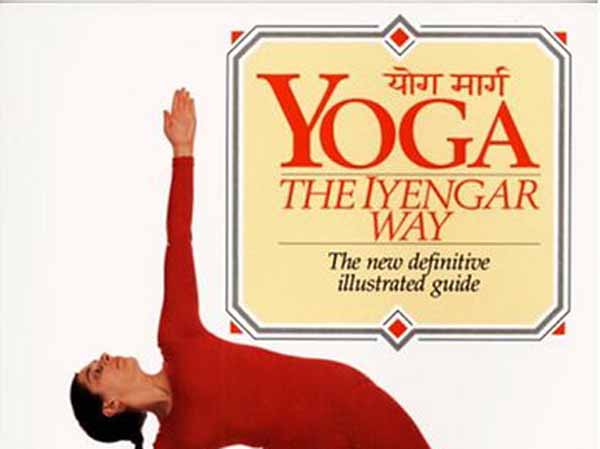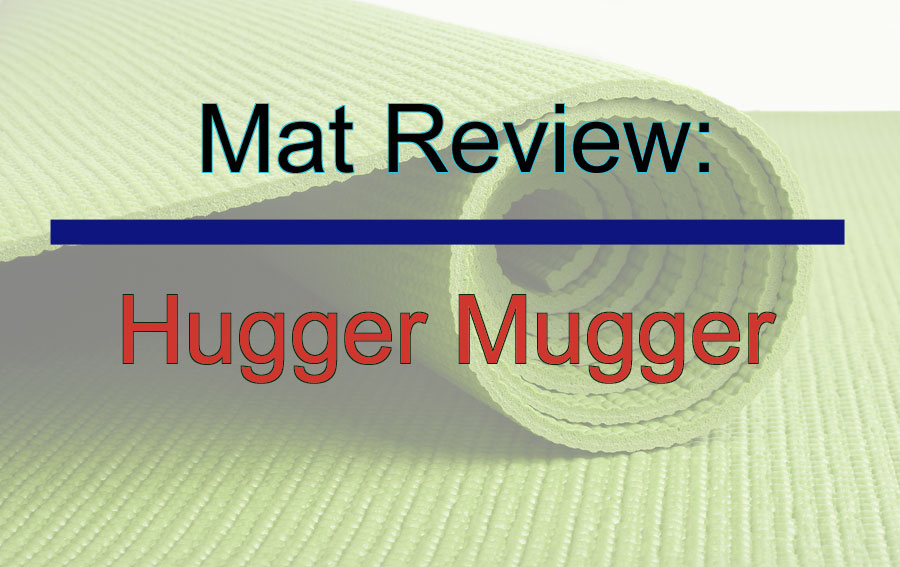In some ways, yoga is as it has always been, the science of self exploration. In some ways though, modern yoga is light years apart from its roots. One of the ways I have seen yoga change the most is in the matter of mats.
These days, yoga mats are the ubiquitous symbol of the craft. You see them on the streets, strung across the back of some intrepid yoga seeker (on foot of course because, hey walking to a yoga class gives you more environmental credit after all). You see them for sale in places like Whole Foods (there really was a time that Whole Foods did not carry things like yoga mats; I was there; I am that old). You see those colorful swaths of rubber or rubber like substance and immediately you know: ‘That is a yoga mat’. After all, there have always been yoga mats, right?
————————
Well, not exactly. The first specifically designated rubber yoga mats were not made until the 1990s, although there were things used as yoga mats. Things like towels and cotton rugs but these were not ideal as they are prone to slipping. You could use carpet underlay or rubber mats under the cotton rugs to prevent the mat from slipping on a slick floor. However, as anyone who has used a towel or blanket as a mat can tell you, your hands and feet will slip, especially in certain yoga poses like downward dog. To keep hands and feet firm on a
cotton rug you need to spray that area of the mat with water so that the damp surface provides a better grip.
————————
I did not have a yoga mat when I first began yoga. I like to joke that we just brushed the larger rocks and twigs out of our way, but this is not that far from the truth. This was not a case of me being the only one without a mat. No one in my yoga group had mats. We just did our yoga on the floor, whatever that floor happened to be. Since many of my early yoga classes were taught in rented dance studios, most of the time the floor was wooden. Occasionally a class would be in a carpeted space, which offered the joy of yoga with the potential of rug burns. The first space I recall that was actually designed as a yoga studio had linoleum floors over concrete. We thought this was great because our hands could grip better on the linoleum.
————————
You may be thinking that doing yoga on a hard floor would be hard on hands, feet, and knees. Yes. Yes it was, but that was just the way things were. You did your yoga and you came away with hands and feet blackened from the dirty floor. I don’t recall being that concerned about it. I can even remember, after one particularly intense yoga session, coming away with abrasions on my abdomen from doing work face down. Yoga was tough ‘back in the day’ and it made us tough and nobody whined or anything. We washed our hands and feet and showed off our abrasions, but we didn’t whine.
 |
|
Ah yes, the olden days of yoga when you could tell who the yoga masters were by the dirt stains on their hands…
|
 |
| Okay – let’s just get that other image out of our minds… |
Well, except we did sort of want it to be better. At this point, in the early 1990s, we knew there were yoga mats. As I recall, one yoga studio in Houston would sell you these mats. They were made by the company Hugger Mugger, but someone in our group had tried this mat and said it did not have a lot of cushion and their hands slipped on the mat. We were not about to give up hand grip for comfort so this did not appeal to us at all. I know it might be hard to believe in this world of plentiful yoga mats, but we had no other yoga mat options. Back in ‘the day’ there was just one kind of official yoga mat, the Hugger Mugger mat. We also did not have the internet, we mailed yoga flyers to people and our official yoga phone was a land-line. The phone did have push buttons, after all, I am not that old.
However, despite lacking in modern technology, we yogis were a clever lot and within our crew was someone who knew of someone that was in the gasket business. Gasket material is made out of rubber and before it is stamped into the various gasket shapes, the rubber material is a big wide sheet. It was proposed that we purchase a roll of gasket rubber and make our own yoga mats.
————————
We pooled our money and that is what we did. Within no time we had a four foot by fifty foot roll of dark black, half inch rubber. It smelled like a tire and the roll was hideously heavy to move. Now four feet is far too wide for a yoga mat, so not only did we need to slice off each piece about six feet long, we also needed to trim the sides down to a more reasonable three feet wide. There are some things you need to know about half inch gasket material rubber if you ever want to make a yoga mat from it. First of all, cutting with normal scissors is next to impossible. It is also difficult to cut with an X-acto knife. A utility knife cuts better, but it is hard to keep a straight line. You also need to have something under the mat you are cutting or you end up cutting into, for example, the linoleum floor. I liken our gasket mat cutting venture to the way early humans set about cutting a wooly mammoth hide with stone knives. Exhausting work and somewhat rough results.
————————
So, after a struggle, finally we had our thick, non-slipping yoga mats. They were black as a moonless night, smelled of car tires and weighed a ton. We, however, were in a heaven known only to those who have suffered yoga without mats. No longer did our knees hurt in kneeling poses. No longer did our hands and feet slip on the floor when we became sweaty. No longer were our hands and feet dark gray from dirt – now they were just somewhat blackened from the gasket material. Eventually, the mats even stopped smelling of a tire shop. What bliss.
 |
|
Definitely an improvement. The gasket dirt would even spell ‘wash me’ on your hand.
|
Unfortunately the bliss was short lived. Gasket material it turns out works better for gaskets. It is not intended for hands and feet to push and stretch it. It is not made to be rolled and unrolled repeatedly. What happens to gasket material not long after it loses its distinctive tire smell is that it loses its integrity. This didn’t happen all at once, but much like a gentle breeze in spring, it came on gradually. At first we just noticed a few bits of black dust like particles in the yoga studio. Huh, imagine that. Someone must have brought in something on their shoes. Then the dust particles got larger, almost like crumbs. We still did not put two and two together. Finally it was abundantly apparent when after using our mats we were surrounded by what looked like Oreo cookie crumbs without all the sugary goodness. Our mats were crumbling.
————————
Well, we did the only logical thing. We ordered another roll of gasket material. This time we chose a pale tan color. This would be better we were sure. After all it was tan. We went through the entire ordeal of hacking out the mats, carrying the heavy as lead beasts, and put up with the smell scenario again. The good news was that these mats never did crumble like the black mats. Instead these mats sunburned. You heard me right. They sunburned. With just the slightest of exposure to sunlight this gasket material began to change color. Hey, that was cool. Our mats were getting a tan. Then with further exposure the surface of the mat hardened into a slick substance and broke off in sheets. Not good. Luckily at the end of our second gasket mat days the world of yoga mats had changed and we just ordered from the far away land of actual yoga mats.
————————
Since then and now I have owned many different yoga mats. I have purchased rolls of mats from
Hugger Mugger. I once purchased a thick purple mat brought over in someone’s luggage from England. That is all I know about it. It was thick, expensive and it came from England. I have owned mats made by
Gaiam,
PrAna,
Jade,
Kulae,
Manduka, and several unknowns. Each mat was cherished for its charming properties, despised for its initial smelliness, and eventually taken for granted and then replaced.
 |
| A yoga masters hands and feet in these now enlightened, modern mat times… |
Being a yoga instructor, I need extra mats for new students or those who forgot their mats, so I have kept most of my best loved mats in my collection. They sort of form an
ascent of mat feature in my studio. I even have a few pebbles around in case someone wants to try out the old ‘brush the pebbles out of the way’ method. Having different mats to try out gives students a chance to explore the world of mats before making that first mat purchase. An especially important step since new mats come in many varieties and some are quite pricey. In my
next post I will go over a list of my favorite mats, where to find good bargains as well as mat care tips. Stay tuned.
————————
As an Amazon Associate, I earn from qualifying purchases.










